 |
 |
 |
| |
NATIONAL AND LOCAL POLICY CHANGES ARE ASSOCIATED WITH INCREASED
HEPATITIS C VIRUS TREATMENT RATES, BUT DISPARITIES REMAIN
|
| |
| |
AASLD 2021 Nov 12-15 Lauren Nephew Indiana University

Background:
Morbidity and mortality from Hepatitis C virus (HCV) persists, despite the availability of direct-acting antivirals (DAA). Specifically, access to DAA remains a challenge for vulnerable populations. National and local policy changes have attempted to improve treatment access, however the impact of these changes is unclear. Here we examine the association between national and local policy changes and the receipt of HCV treatment in Indiana.
Methods:
We performed a cohort study of adults with HCV seen at one of over 200 Indiana University Health practices from 05/2011-03/2021 using statewide electronic health data. With input from the Indiana Department of Public Health, nine policy changes were defined a-priori. A Lowess curve evaluated treatment trends over time. Monthly screening and treatment rates were examined. Multivariable logistic regression explored treatment trends and predictors of treatment.
Results:
The population (N=10,336) was 13.4% Black, 51.8% were born after 1965, and 44.7% were Medicaid recipients. Inflections in the Lowess treatment curve defined four discrete policy periods: 1) Interferon+DAA, 2) Early DAA, 3) Medicaid expansion/optimization, 4) Medicaid restrictions (fibrosis/prescriber) removed (Figure 1).
The largest increase in monthly treatment rates was during period 4, when Medicaid prescriber and fibrosis restrictions were removed (2.4 persons per month [PPM] in period 1 to 72.3 PPM in period 4, p<0.001; 78.0% change in slope). Antibody screening also increased from 794.3 PPM in period 1 to 3,388.1 PPM in period 4 (p<0.001).
Multivariable logistic regression analysis showed being born after 1965 (vs. before 1945; OR 0.69; 95% 0.49-0.98) and having Medicaid (vs. private insurance; OR 0.47; 95% CI 0.42-0.53) were associated with lower odds of initiating treatment for HCV. Black race (OR 1.02; 95% CI 0.93-1.13) was not significantly associated with treatment.
Conclusion:
DAAs had limited impact on HCV treatment rates until Medicaid restrictions were removed. HCV screening rates tracked with HCV treatment trends. Further study is needed to address HCV treatment-related age and insurance disparities.
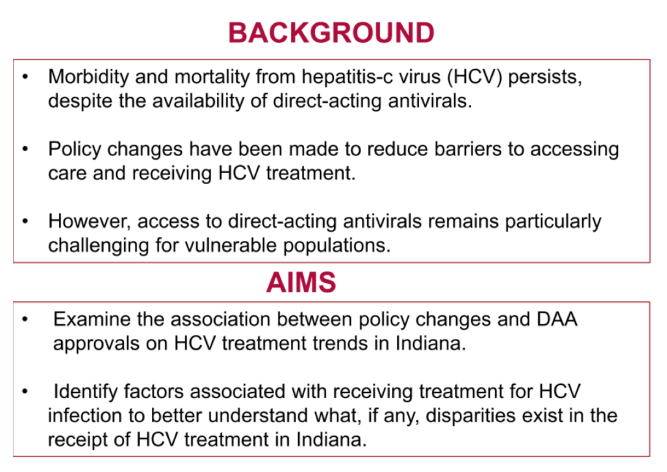

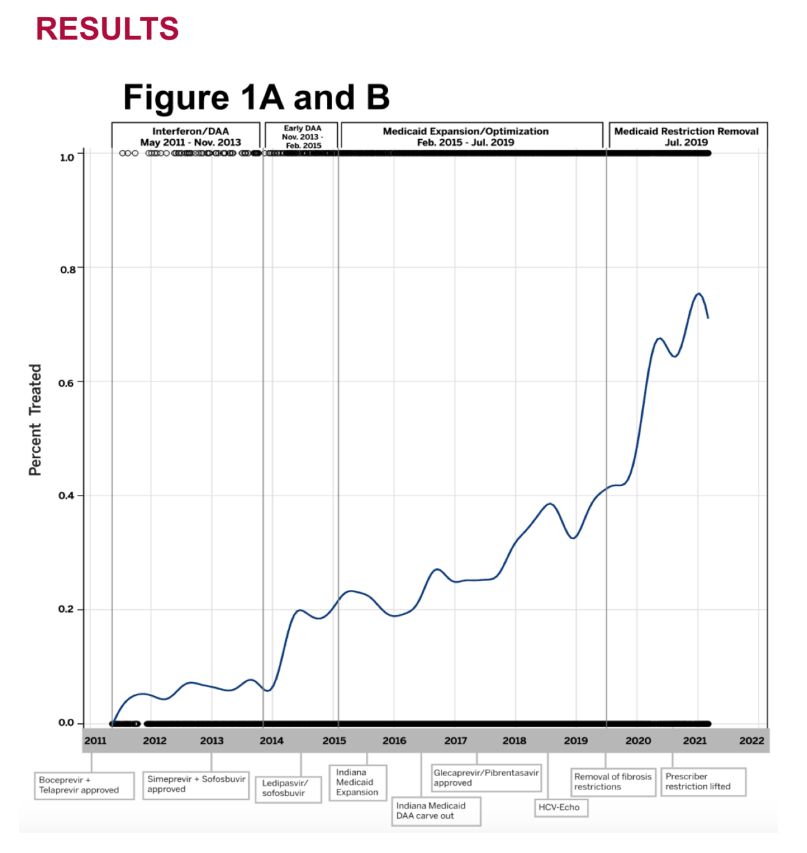
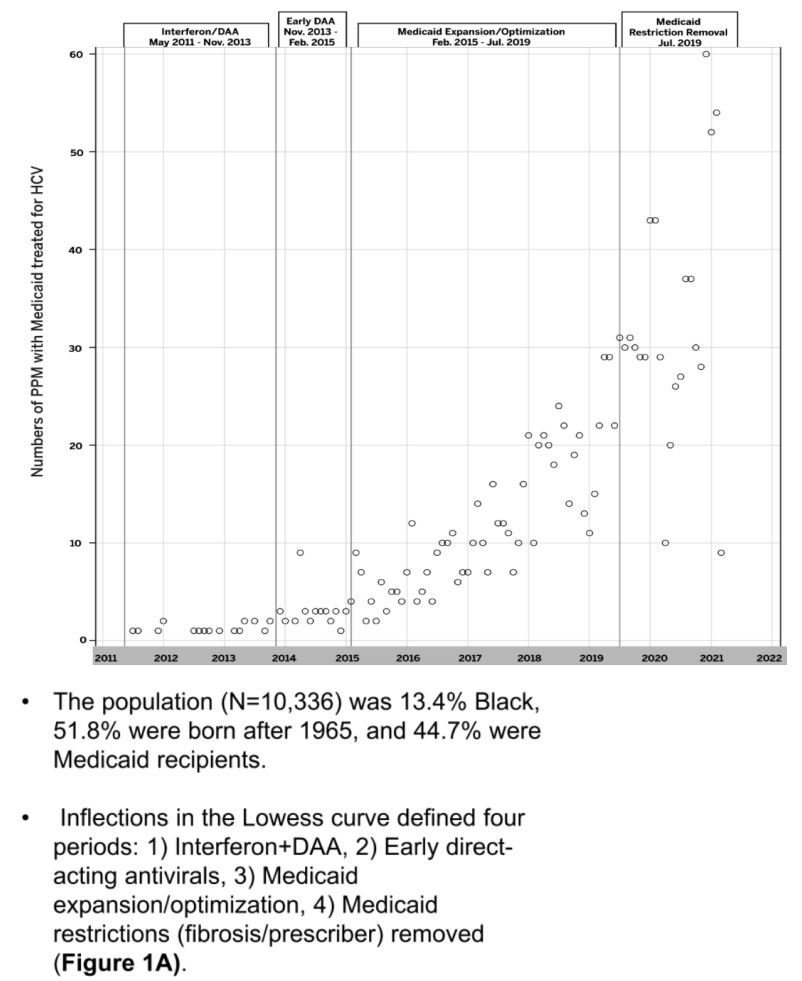
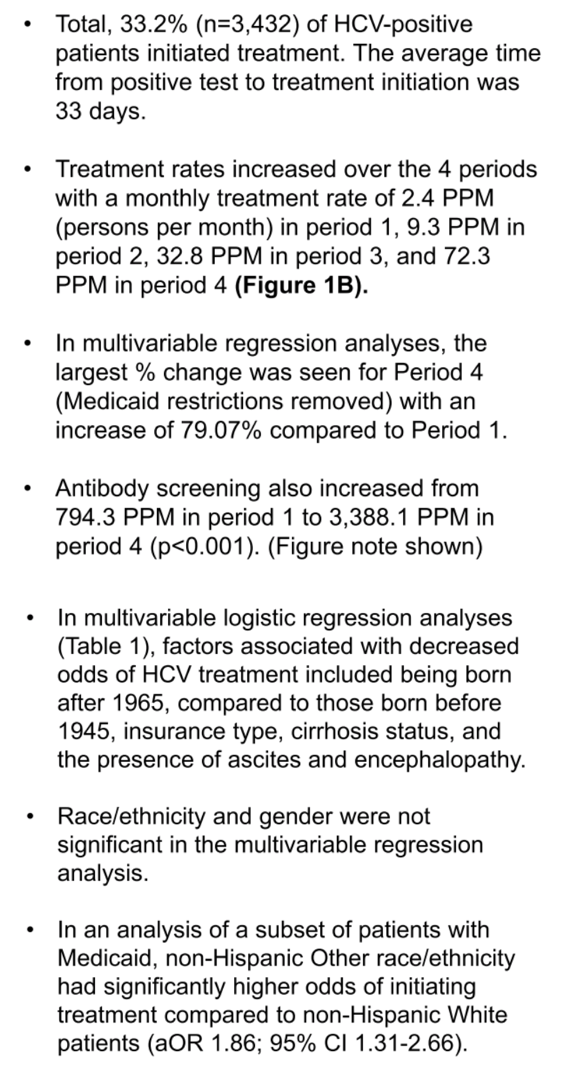
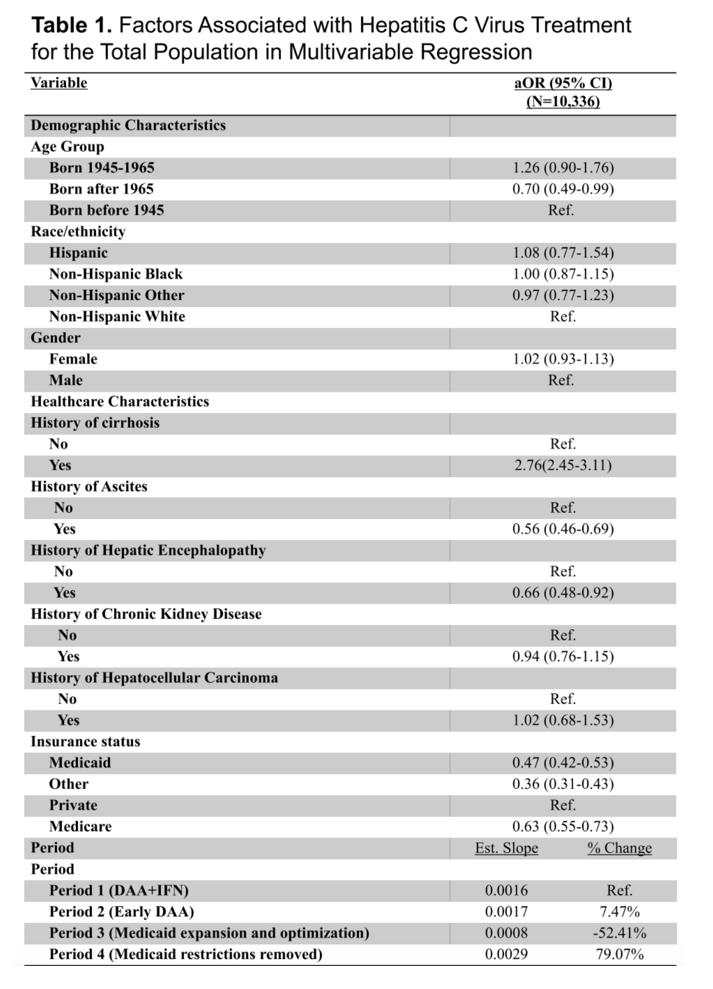
|
| |
|
 |
 |
|
|